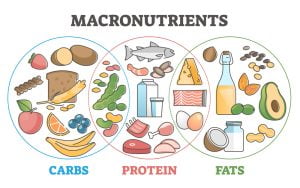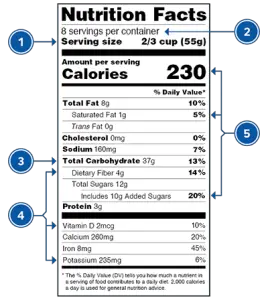
Eating healthy is essential for maintaining a vibrant life. When you eat healthy foods, you give your body the nutrients it needs to function at its best. You also reduce your risk of developing chronic diseases, such as heart disease, stroke, and cancer.
This blog post will discuss the essential healthy eating tips that you need to know. We will cover everything from understanding the principles of healthy eating to creating a healthy meal plan. We will also provide you with delicious and nutritious recipes to help you get started.
There are four main principles of healthy eating:
Eat a nutrient-dense diet. This means eating foods that are high in nutrients and low in calories. Nutrient-dense foods include fruits, vegetables, whole grains, lean proteins, and healthy fats.

Healthy food
Nutrient-dense foods. Source: Pexel
Balance your macronutrients. Macronutrients are the three main nutrients that your body needs: carbohydrates, proteins, and fats. A healthy diet should include a balance of these macronutrients.

Macronutrients
Choose whole foods over processed foods. Whole foods are foods that have not been heavily processed. They are typically higher in nutrients and lower in calories than processed foods.
| Characteristic | Whole Foods | Processed Foods |
|---|---|---|
| Ingredients | Minimally processed or unprocessed | May contain many added ingredients, such as sugar, salt, unhealthy fats, and artificial flavors |
| Nutrient Content | Rich in nutrients, such as vitamins, minerals, fiber, and antioxidants | May be low in nutrients or contain unhealthy nutrients |
| Processing | Minimally processed or not processed at all | May be heavily processed, which can change the nutritional content and texture of the food |
| Taste | Natural taste | May have a more artificial taste |
| Health Benefits | May offer a variety of health benefits, such as improved heart health, weight loss, and reduced risk of chronic diseases | May not offer any health benefits or may even be harmful to health |
| Availability | May be more difficult to find than processed foods | May be more readily available than whole foods |
Here are some tips for choosing whole foods:
Practice mindful eating. Mindful eating is the practice of paying attention to your food and your body’s response to it. When you eat mindfully, you are more likely to eat only when you are hungry and to enjoy your food more.

Eggs are good source of protein. Photo by engin akyurt on Unsplash
Once you understand the principles of healthy eating, you can start to make healthy food choices. Here are a few tips for navigating healthy food choices:

Food label
| Characteristic | Healthy Fats | Trans Fats |
|---|---|---|
| Type | Unsaturated and monounsaturated fats | Saturated and trans fats |
| Sources | Plant-based oils, nuts, seeds, and fish | Animal-based products, processed foods, and partially hydrogenated oils |
| Effects on cholesterol | Can help lower LDL (bad) cholesterol and raise HDL (good) cholesterol | Can raise LDL (bad) cholesterol and lower HDL (good) cholesterol |
| Health benefits | May help improve heart health, reduce inflammation, and protect against chronic diseases | May increase the risk of heart disease, stroke, and other chronic diseases |
| Recommendations | Consume in moderation | Avoid |
Unsaturated fats are liquid at room temperature and come from plant-based sources, such as vegetable oils, nuts, and seeds. Monounsaturated fats are also liquid at room temperature and come from plant-based sources, such as olive oil, avocados, and nuts.
Trans fats are unhealthy fats that are made by adding hydrogen to vegetable oils. This process makes the oils more solid and shelf-stable. Trans fats are found in some processed foods, such as baked goods, fried foods, and frozen dinners.
Trans fats can raise LDL (bad) cholesterol and lower HDL (good) cholesterol. This can increase the risk of heart disease, stroke, and other chronic diseases. The FDA banned the use of trans fats in processed foods in 2018, but they may still be found in some foods made before the ban.
It is important to limit your intake of trans fats and focus on consuming healthy fats instead. Healthy fats can help improve your overall health and well-being.
Once you know what healthy foods to eat, you can start to create a healthy meal plan. Here are a few tips for creating a healthy meal plan:
Once you have a healthy meal plan in place, there are a few practical strategies that you can use to help you stick to it. These include:
Here are a few delicious and nutritious recipes to help you get started on your healthy eating journey:
These are just a few ideas to get you started. There are endless possibilities when it comes to healthy eating. The most important thing is to find foods that you enjoy and that fit into your lifestyle.
Eating healthy is a journey, not a destination. There will be ups and downs, but it’s important to keep moving forward. By following the tips in this blog post, you can start to make healthy eating a part of your everyday life.
Healthy eating is a powerful investment in your overall well-being and vitality. By implementing these practical tips and strategies, you can make informed choices and nourish your body with the nutrients it craves. Remember to listen to your body, embrace variety, and seek balance in your dietary choices. With dedication, mindfulness, and a love for nutritious food, you can embark on a transformative journey towards a vibrant and fulfilling life.
I hope you found this blog post helpful. If you have any questions, please leave a comment below.
Here are some additional resources that you may find helpful:
